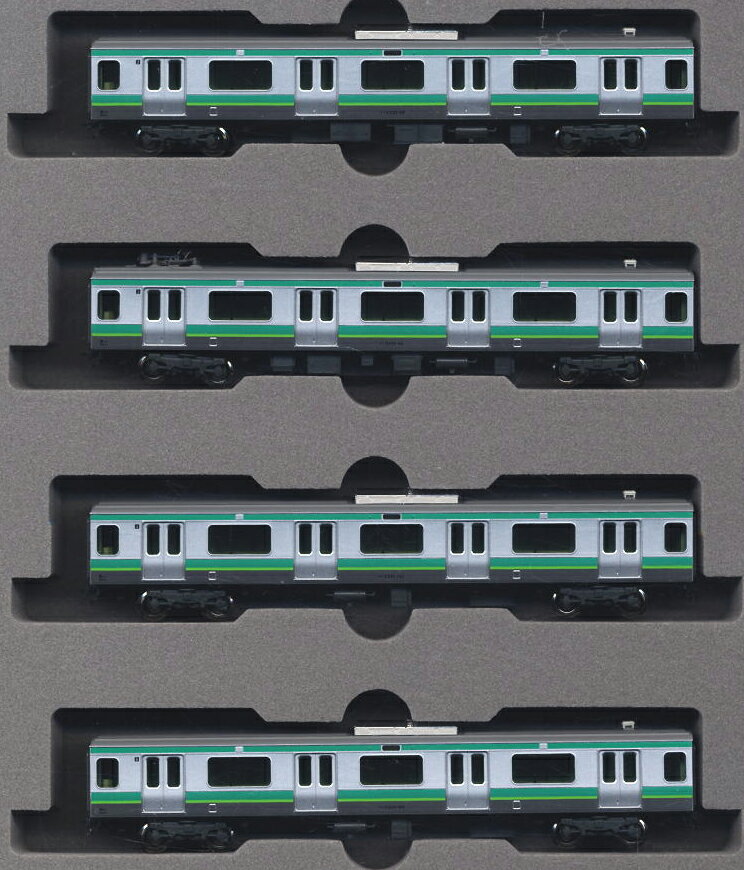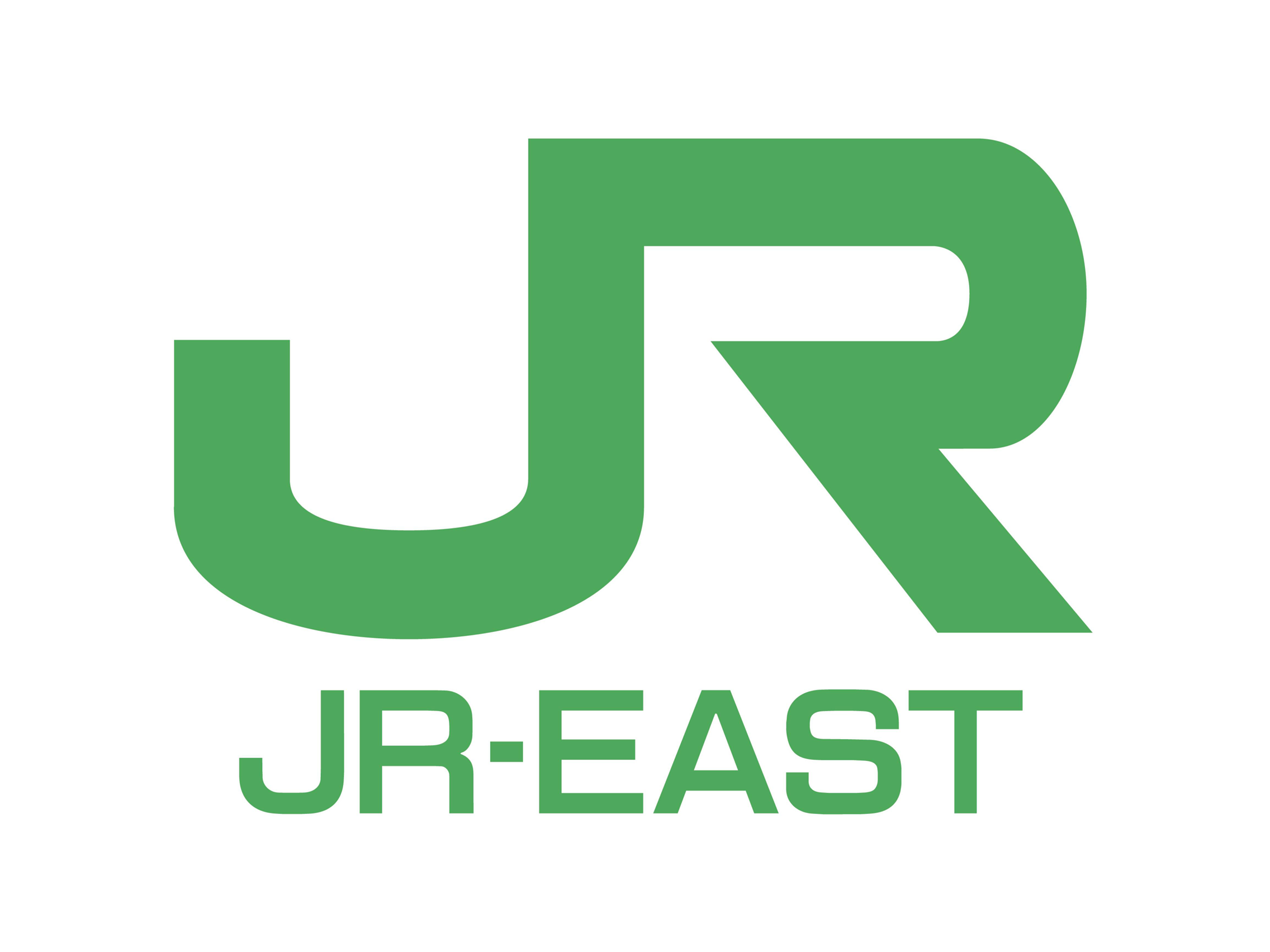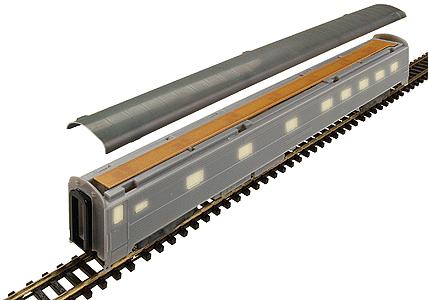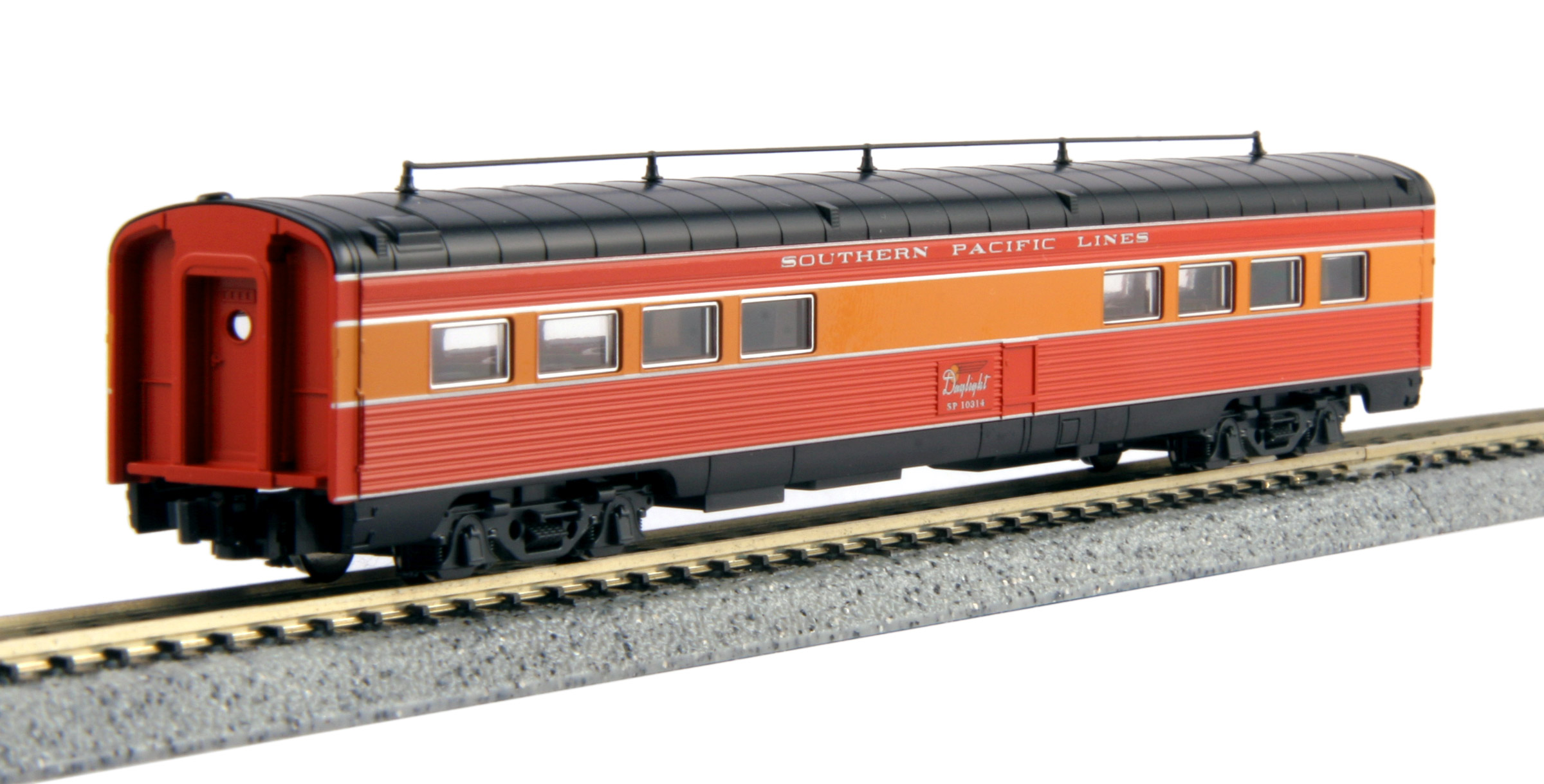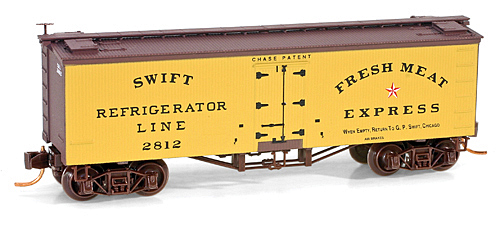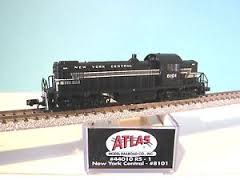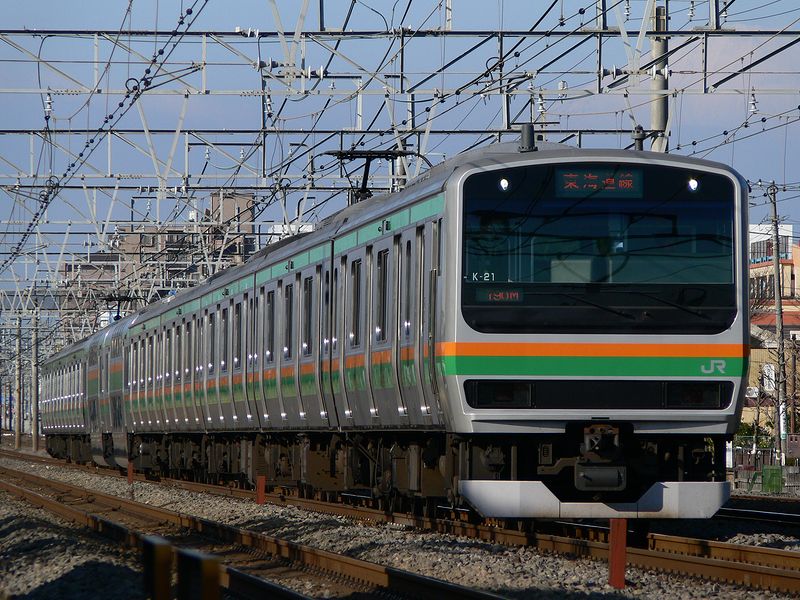Specific Item Information: This is a 4 car add on set that goes with set 10-551. Comes in book type case.
Model Information: Kato boxed sets for Japanese Prototypes come in various shapes and sizes. These may contain complete train sets with track and power pack or may be as simple as a pair of passenger coaches. Many of the sets use "bookshelf" boxes with cardboard sleeves and carefully cut foam inserts.
Prototype History: The E231 series (E231系 E231-kei) is an electric multiple unit (EMU) train type used for commuter and outer-suburban services operated by East Japan Railway Company (JR East) in Japan since 2000.
Originally, 46 ten-car sets (Sets B1-42, B57, B80-82) were based at Mitaka Depot for use on Chuo-Sobu Line services, replacing the earlier 103 and 201 series fleet. Sets B1 to B42 were delivered between February 2000 and November 2001. Set B57 was delivered in November 2002. Sets 80 to 82 were delivered between October and November 2006. The first sets entered service on 13 March 2000. These sets each include one "six-door" SaHa E230 car (car 5).
Originally, 46 ten-car sets (Sets B1-42, B57, B80-82) were based at Mitaka Depot for use on Chuo-Sobu Line services, replacing the earlier 103 and 201 series fleet. Sets B1 to B42 were delivered between February 2000 and November 2001. Set B57 was delivered in November 2002. Sets 80 to 82 were delivered between October and November 2006. The first sets entered service on 13 March 2000. These sets each include one "six-door" SaHa E230 car (car 5).
Road Name History: JR East was incorporated on 1 April 1987 after being spun off from the government-run Japanese National Railways (JNR). The spin-off was nominally "privatization", as the company was actually a wholly owned subsidiary of the government-owned JNR Settlement Corporation for several years, and was not completely sold to the public until 2002.
Following the breakup, JR East ran the operations on former JNR lines in the Greater Tokyo Area, the Tohoku region, and surrounding areas. Its railway lines primarily serve Kanto and Tohoku regions, along with adjacent areas in Koshin'etsu region (Niigata, Nagano, Yamanashi) and Shizuoka prefectures.
Following the breakup, JR East ran the operations on former JNR lines in the Greater Tokyo Area, the Tohoku region, and surrounding areas. Its railway lines primarily serve Kanto and Tohoku regions, along with adjacent areas in Koshin'etsu region (Niigata, Nagano, Yamanashi) and Shizuoka prefectures.
Brand/Importer Information: Kato Precision Railroad Models (関水金属株式会社 Sekisui Kinzoku Kabushikigaisha) is a Japanese manufacturer of model railroad equipment in N and HO scales. The Tokyo-based company manufactures models based on Japanese prototypes (such as the Shinkansen bullet train) for the Japanese market, North American prototypes for the North American market and European high-speed trains for European market.
The Kato (pronounced kah-toe) model railroad companies were founded by Yuji Kato, father of current president Hiroshi Kato, of the parent company Sekisui Kinzoku Co., Ltd.
The design and distribution of models for the North American market are handled by their U.S. subsidiary, Kato USA, located in Schaumburg, Illinois.
The design of special models for the European market is handled for some of them by their partner, Lemke, whereas the general distribution of Kato products in Europe is handled by NOCH; both companies are located in Germany.
As a result, some Kato European models are sold as Kato Lemke and others as Kato (alone).
The Kato (pronounced kah-toe) model railroad companies were founded by Yuji Kato, father of current president Hiroshi Kato, of the parent company Sekisui Kinzoku Co., Ltd.
The design and distribution of models for the North American market are handled by their U.S. subsidiary, Kato USA, located in Schaumburg, Illinois.
The design of special models for the European market is handled for some of them by their partner, Lemke, whereas the general distribution of Kato products in Europe is handled by NOCH; both companies are located in Germany.
As a result, some Kato European models are sold as Kato Lemke and others as Kato (alone).
Item created by: nscalestation on 2016-12-30 14:04:01. Last edited by Alain LM on 2020-11-01 06:12:47
If you see errors or missing data in this entry, please feel free to log in and edit it. Anyone with a Gmail account can log in instantly.
If you see errors or missing data in this entry, please feel free to log in and edit it. Anyone with a Gmail account can log in instantly.


